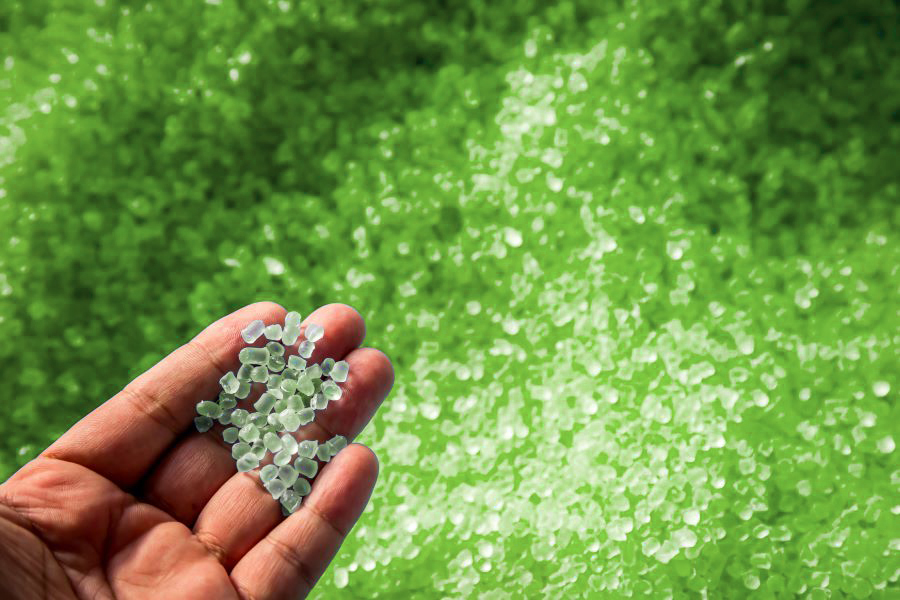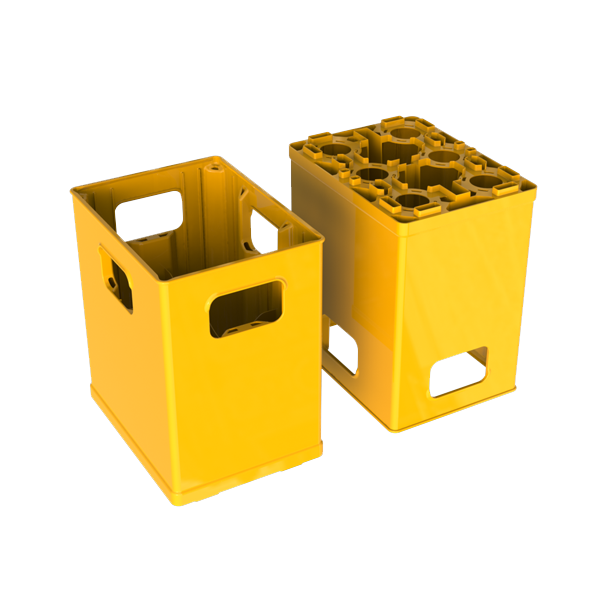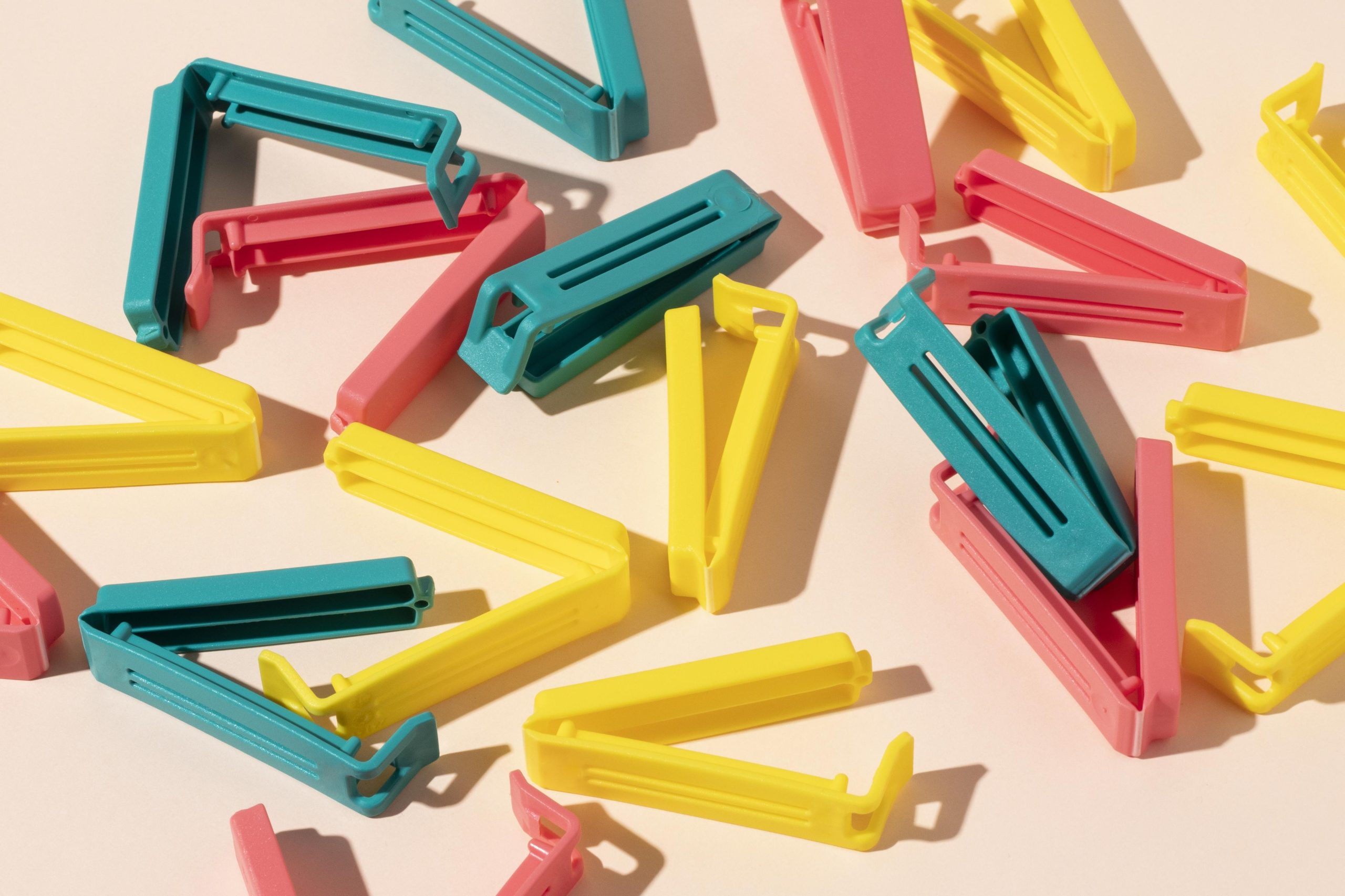
Plastic injection is a versatile manufacturing process used to produce a wide range of products. Selecting the appropriate plastic material is crucial for the success of the final product, not only in terms of functionality but also cost and production efficiency. In this article, we will compare six of the most common plastics used in plastic injection: polyethylene (PE), polypropylene (PP), acrylonitrile butadiene styrene (ABS), polyoxymethylene (POM), polyethylene terephthalate (PET), and polycarbonate (PC), highlighting their properties, applications, and limitations. We will also mention other technical polymers widely used in the industry, such as polyamide (PA).
Properties and applications
Polyethylene (PE)
High Density (HDPE): Elastic modulus of 800 to 2000 MPa, approximate melting point of 130°C to 135°C, resistant up to -100°C. It has excellent tensile strength and hardness, with low water absorption.
Low Density (LDPE): Elastic modulus of 100 to 400 MPa, approximate melting point of 105°C to 115°C, flexible at temperatures as low as -50°C. Its transparency varies depending on the grade and processing.
Applications: HDPE is used in containers, toys, and impact-resistant parts. LDPE is common in films, plastic bags, and flexible containers.

Polypropylene (PP)
Properties: Elastic modulus of 1300 to 1800 MPa, melting point of 160°C to 170°C. Exhibits remarkable chemical and thermal resistance, capable of operating continuously at temperatures up to 100°C without deformation.
Applications: Used in food packaging, automotive components, textiles, and as packaging material due to its heat resistance and rigidity.

Acrylonitrile Butadiene Styrene (ABS)
Properties: Combination of properties from its three components, resulting in an elastic modulus of 2000 to 2400 MPa. Glass transition temperature near 105°C, providing excellent toughness at low temperatures.
Applications: Widely used in the automotive industry, manufacturing of toys (such as LEGO blocks), electronic device housings, and appliances.

Polyoxymethylene (POM)
Properties: Elastic modulus of 2700 to 3400 MPa, melting point of 165°C to 180°C. Low moisture absorption, allowing for dimensional stability in humid environments.
Applications: Used in precise mechanical parts such as gears, bearings, closing system components, and in the automotive industry.

Polyethylene Terephthalate (PET)
Properties: Elastic modulus of 2300 to 3100 MPa, melting point of 250°C to 260°C. Excellent fatigue resistance and dimensional stability, as well as one of the best barriers against oxygen and carbon dioxide.
Applications: Mainly used in beverage bottles and food packaging for its ability to contain carbonation and resist pressure.

Polycarbonate (PC)
Properties: Elastic modulus of 2300 to 2400 MPa, melting point of 145°C to 150°C. Outstanding impact resistance, able to withstand temperatures of up to 135°C without deformation. UV exposure can be mitigated with additives or protective coatings.
Applications: Used in safety elements such as protective goggles, transparent housings for electronic devices, lighting components, and in applications requiring high durability.

Polyamide (PA)
This type of material is often combined with different fiber reinforcements such as glass. This achieves an improvement in its characteristics.
Varieties such as PA 6 and PA 6,6: Elastic modulus of 1000 to 3000 MPa for PA 6 and 2700 to 3000 MPa for PA 6,6. Melting points of approximately 220°C for PA 6 and 260°C for PA 6,6. Moisture absorption can affect its mechanical and dimensional properties, but it also reduces its stiffness and increases its toughness.
Applications: Polyamide is used in various sectors for its strength and lightness. This material is useful in manufacturing parts that require high mechanical requirements such as door handles or gears and bearings.

Thermoplastic Polyurethane (TPU) and Thermoplastic Elastomers (TPE)
Properties: Characterized by their versatility and wide range of hardness. They have excellent wear resistance, tear resistance, and resistance to various solvents, oils, and greases. Their main appeal to the industry is their flexibility over a wide temperature range, from -50°C to 80°C, with some special grades capable of withstanding higher temperatures.
Applications: Due to their strength and elasticity, TPU and TPE are used in a wide variety of applications, including hoses, tubes, seals, and mobile phone housings. They are also used in a wide range of products requiring a soft-touch material, such as tool grips or toys.

Considerations for Material Selection
These advanced technical properties are crucial for material selection in each project, as each application has specific requirements in terms of mechanical strength, impact resistance, thermal and chemical stability, and behavior in different environments. Professionals must consider not only the inherent properties of each polymer but also how the plastic injection process and mold design can influence the final product characteristics.
Proper material selection not only ensures the functionality and durability of the product but also optimizes production costs and improves manufacturing efficiency. Furthermore, understanding technical properties allows experts to innovate and explore new applications while maintaining the sustainability and environmental performance of the final products.
At Moldblade, we assist you in selecting the best material for your project based on its needs. Our engineering department is available to address any inquiries that may arise.




